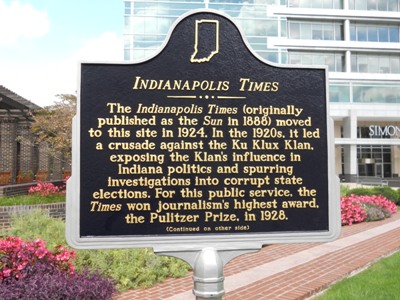
The Indianapolis Times began publication as the Sun in 1888, described by the Ayer’s newspaper directory as the “only one-cent paper in Indiana.” Fred L. Purdy served as its first editor and owned a minority stake in its publishing; J. S. Sweeney owned the majority stake. It ran daily under this title until 1899 and its circulation grew to 12,823 by 1898. In 1899, it was renamed the Indianapolis Sun and continued its daily publication. During this time, it also maintained a professional partnership with the Scripps-McRae wire service out of Cincinnati, Ohio.


In 1910, Rudolph G. Leeds, Indiana newspaper magnate and editor of the the Richmond Palladium and Sun-Telegram, purchased the Sun. From 1913-1914, George H. Larke and William D. Boyce owned the paper, and altered the title slightly to the Evening Sun. Its daily circulation grew to 34,453 at this time. On July 20, 1914, Boyce and new co-owner John W. Banbury renamed as the Indiana Daily Times. By 1915, its circulation increased to 46,384.
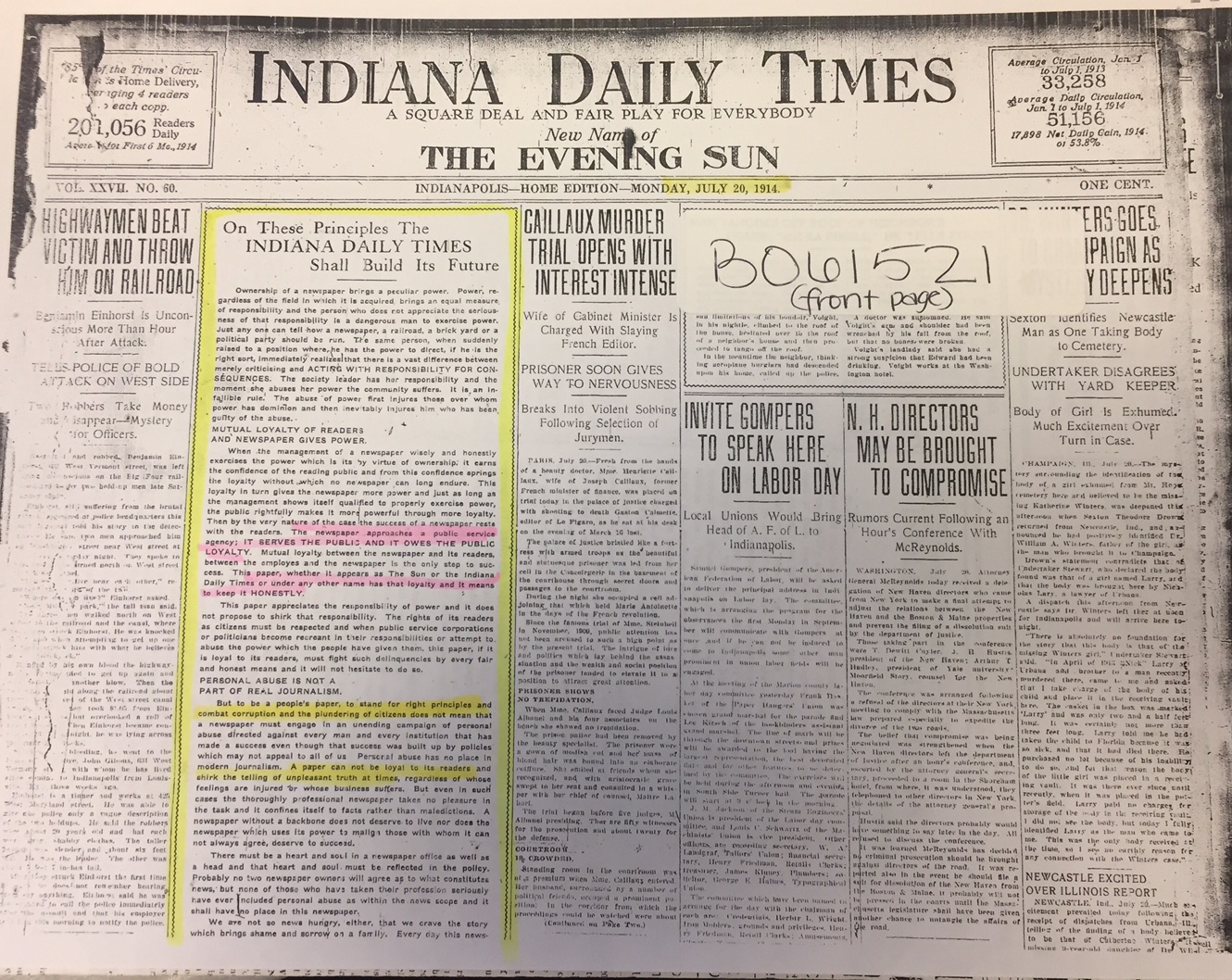
In 1922, Scripps-Howard publishing purchased the Times and it was renamed the Indianapolis Times, the title it kept until it ceased publication in 1965. Roy W. Howard served as the president of Scripps-Howard publishing from 1922-1964, overseeing not only the Times but the United Press International worldwide wire service. Alongside in-house journalism by Times staff, many articles published during this period came from the Scripps-Howard wire service, Newspaper Enterprise Association.
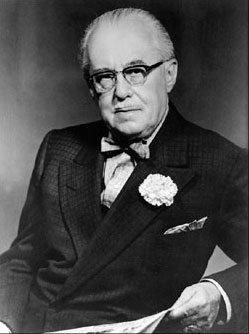

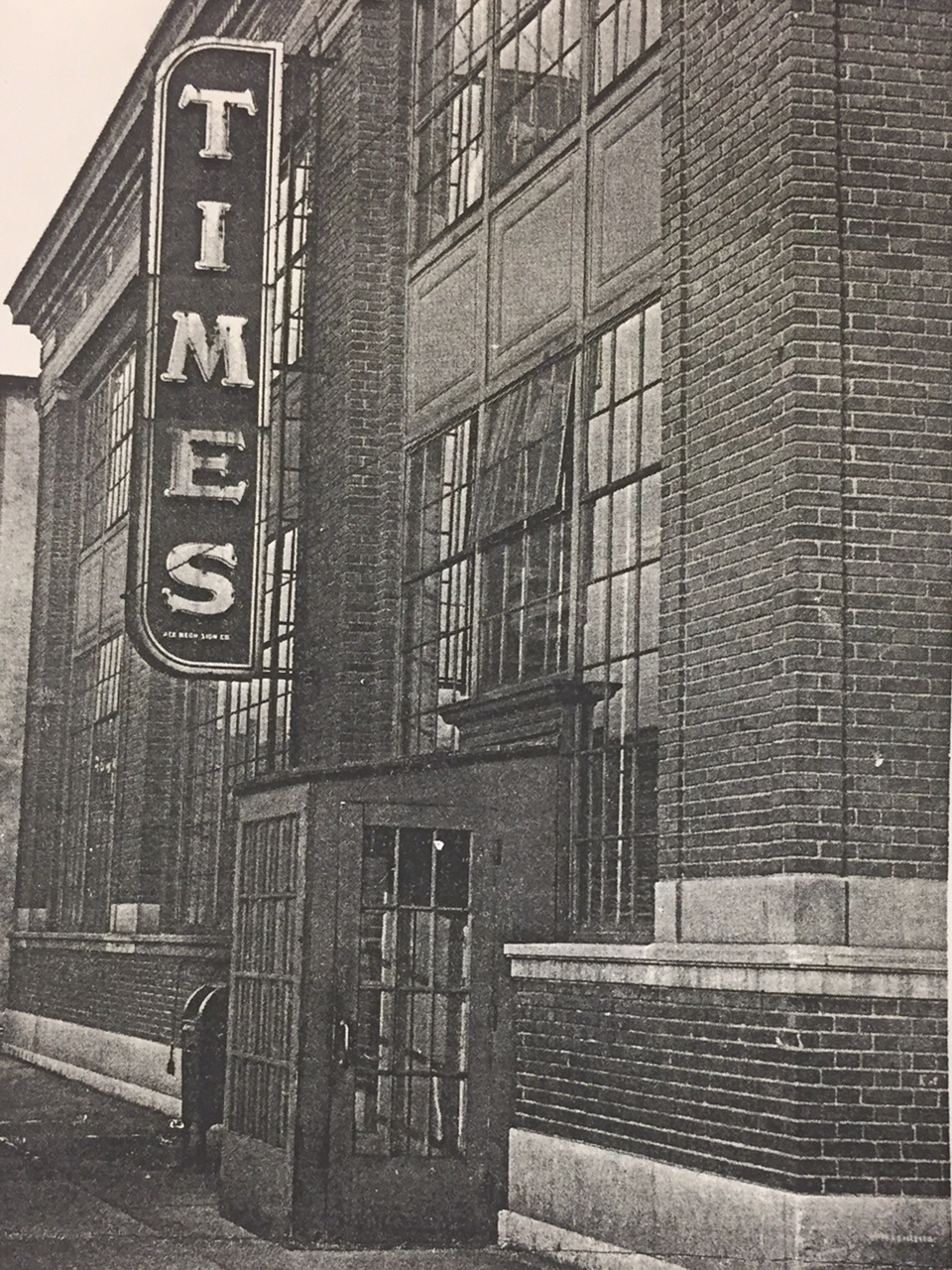
Over the next forty years, the Indianapolis Times earned a reputation for its “crusading” journalism. In 1927, under the editorship of Boyd Gurley, the Times published numerous articles exposing the collusion and corruption between the Indiana state government, Governor Ed Jackson, and the Ku Klux Klan. In particular, it exposed the direct corruption between Jackson and Klan leader D. C. Stephenson. The Times earned the Pulitzer Prize in 1928 for “exposing political corruption in Indiana, prosecuting the guilty and bringing about a more wholesome state of affairs in civil government.”
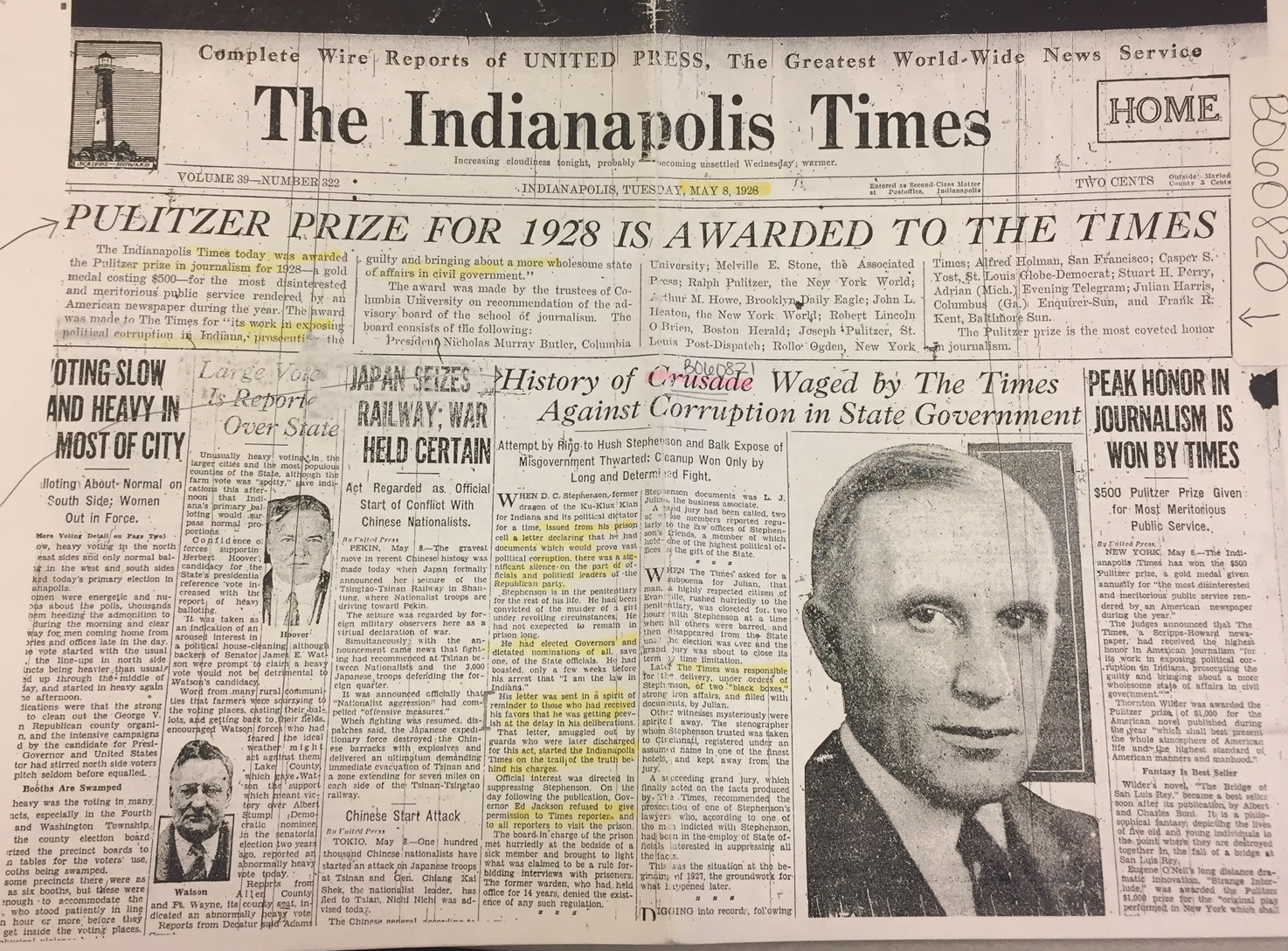
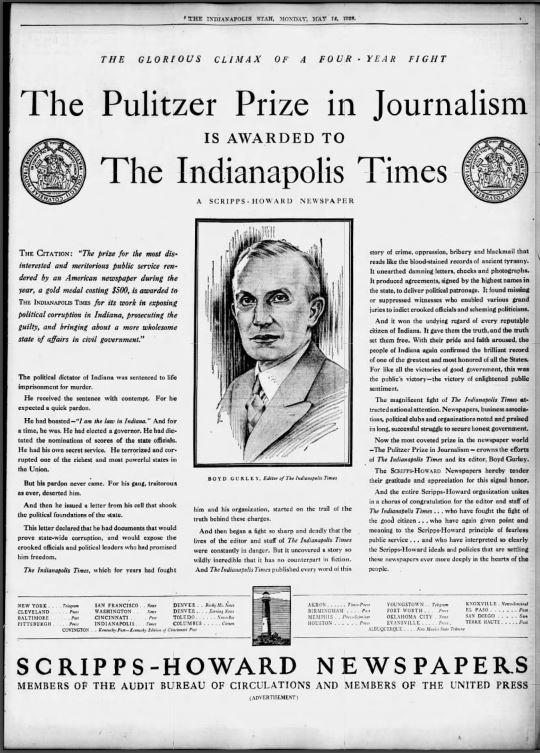
During the 1930s, the Times advocated for children’s needs, raising money for charities that supplied coats and other clothing items to children hit hard by the Great Depression. In the recession of 1961-62, the Times helped 4,000 Indiana residents find jobs through its publishing of free employment ads. Alongside its Klan coverage, the Times also covered multiple scandals, from corruption in the state’s highway fund and voter fraud in congressional districts to exposing falsely reported Indianapolis crime statistics. It even published coverage during the 1960s that advocated for better lunches in public schools, through the use of the federal school surplus program.


Despite its successful journalism and philanthropy, the Times lacked the resources and circulation to compete with Indianapolis’s rival dailies, the News and the Star. On October 11, 1965, the Indianapolis Times ran its final issue and suspended publication. Its final daily circulation totaled 89,374, with a Sunday circulation of 101,000.

While the Indianapolis Times ceased publication over 50 years ago, it maintains a legacy of good journalism and civic integrity. Due to its immense impact on the community, the Indiana Historical Bureau shared the newspaper’s history with future generations of Hoosiers via a historical marker originally placed in 1979, and replaced in 2013.
